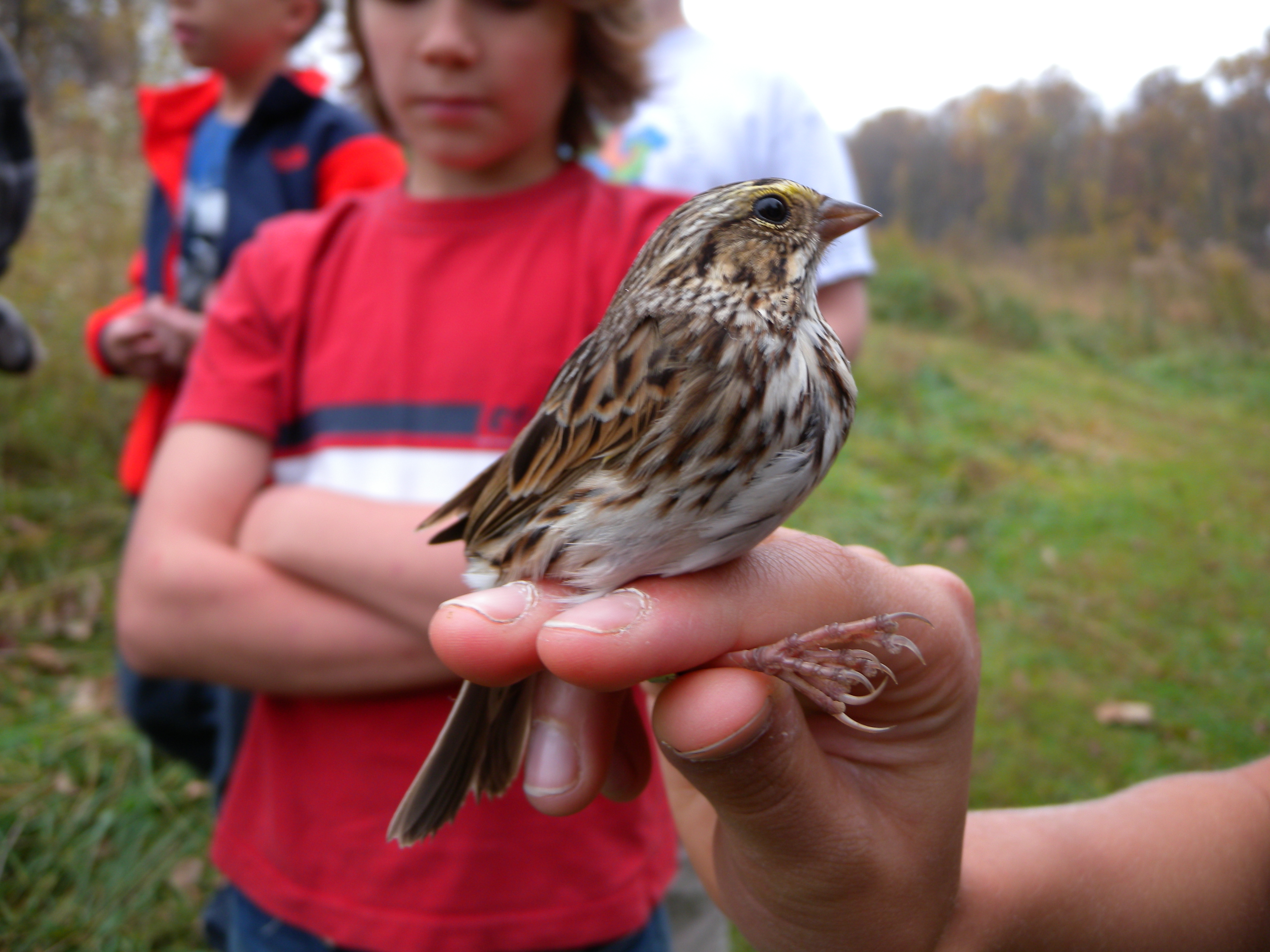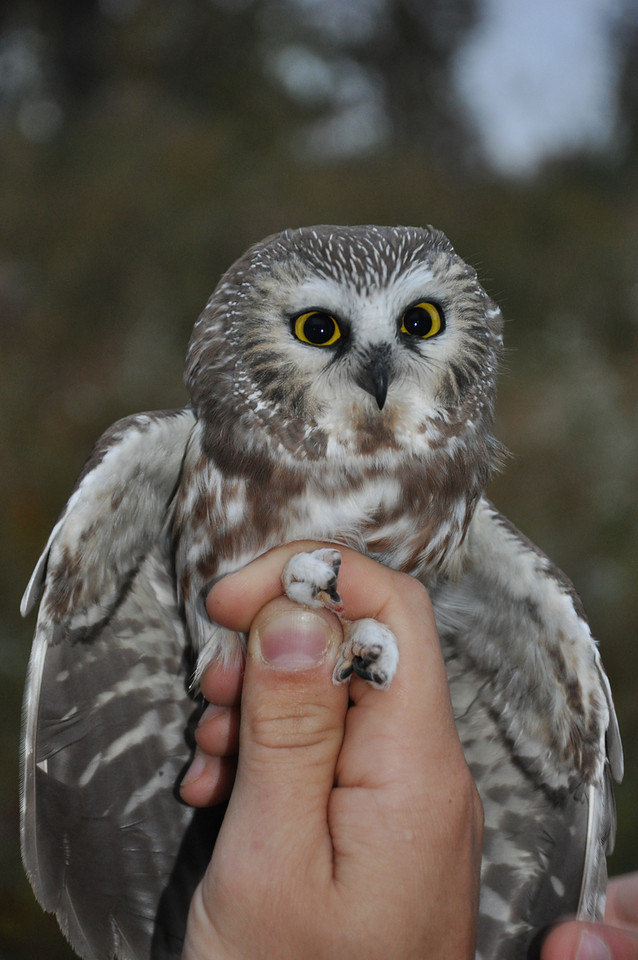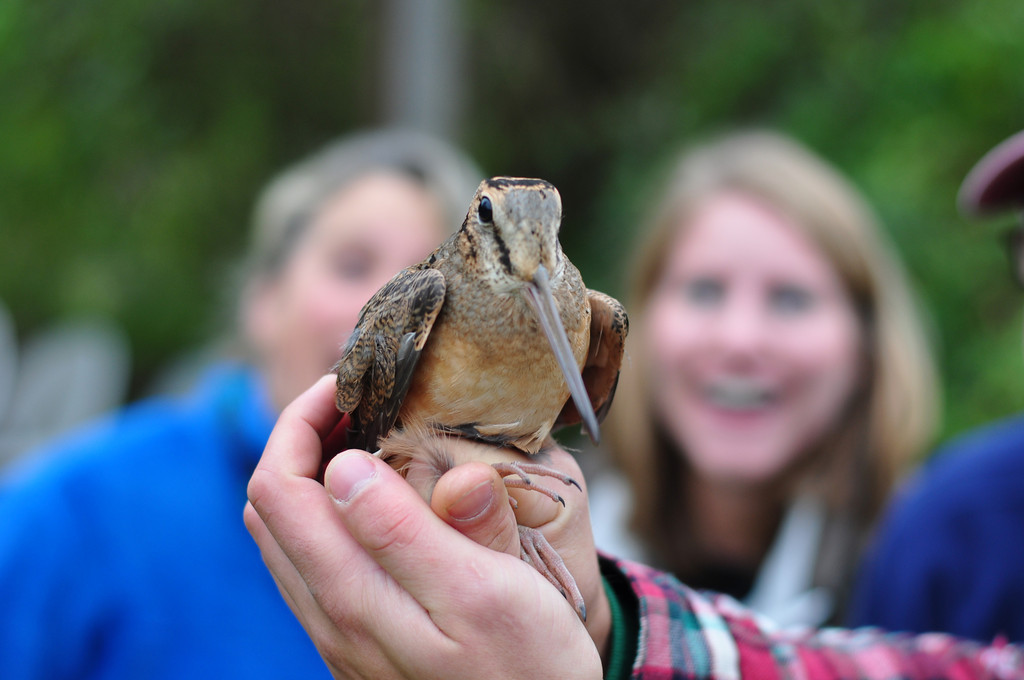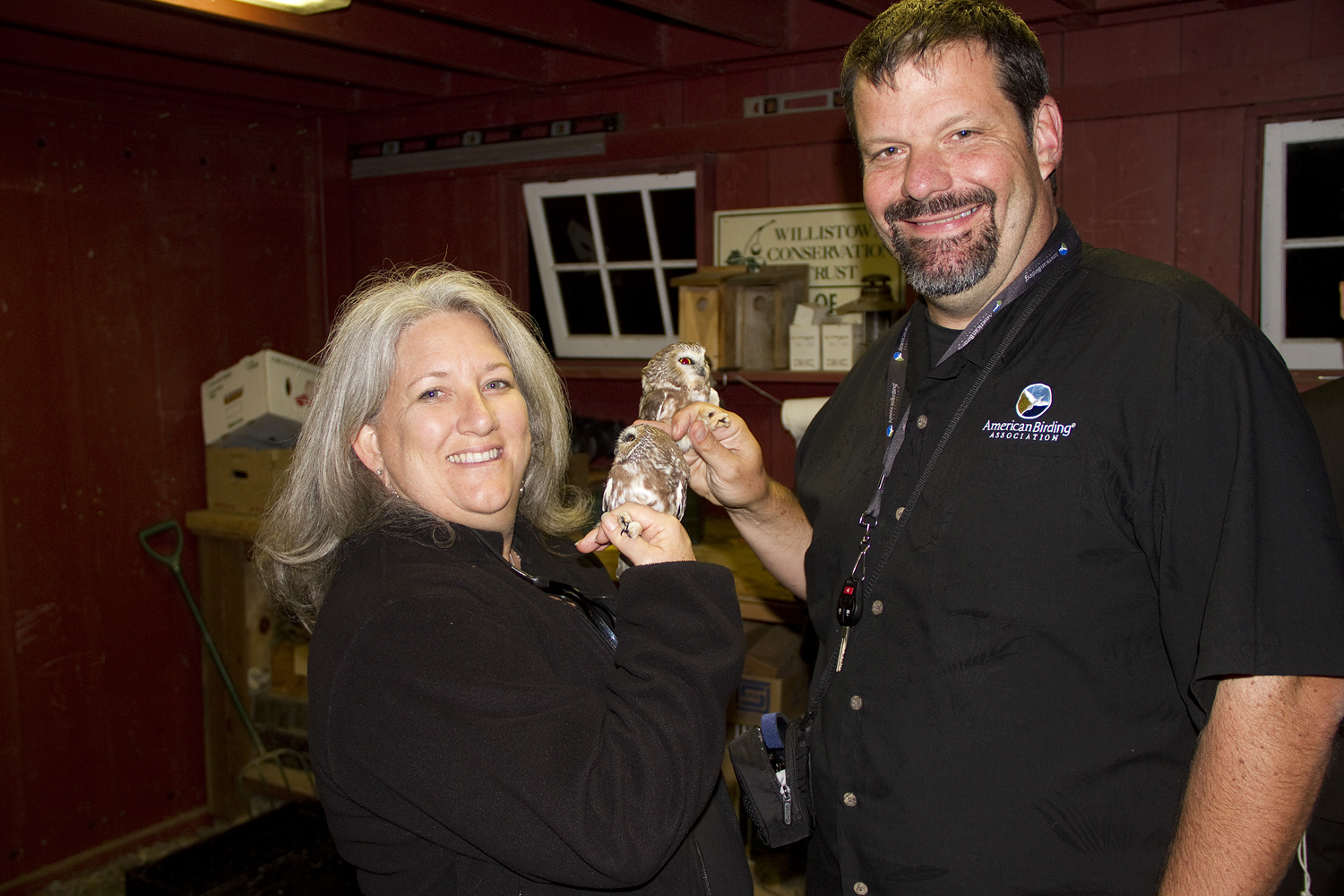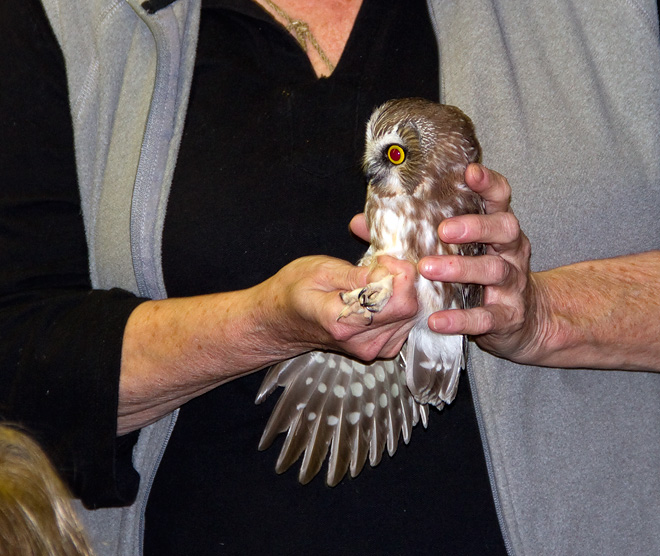
The beauty of a cloudy spring day seems to stand out against the sunshine-filled days. Calming gray skies provide depth and clarity to the vernal blush of the cherry blossoms and magnolias, and who needs rays of sunshine when the forsythia is ablaze in a yellow flourish of petals! Romantic purples of rhododendrons and Eastern redbuds don’t need the solar spotlight; in fact these purple blossoms are pure witchcraft when set against a softer backdrop, sending onlookers into a zen-like trance of forgetting about the stress of spring schedules— and remembering to breathe.
Spring at the Trust is a busy time; we are often outside sharing the beauty of nature with the community and helping them to appreciate spectacular ephemeral shows, two of which you may be unaware.
There is a cryptic shorebird with feathers that disappear against a backdrop of russet leaves, large fleshy feet that leave telltale prints in the mud, big alien-like eyes set oddly at the back of their head, and a long flexible bill that probes into the ground in search of earthworms. It is the American Woodcock, otherwise know as the Timberdoodle or Bog Sucker! This magnificent bird is a denizen of wet edges around deciduous forests rather than beaches like other shorebirds.



Although you wouldn’t expect aerial dynamics from such chunky little guys, the male woodcocks perform a spectacular display that can be seen in our area for a brief window of time in March. We are lucky to have their favorite kind of wet open field habitat at two of the Willistown Conservation Trust’s Preserves: Ashbridge on Strasburg Road and Rushton Woods Preserve on Delchester Road.
At both sites, if you stand facing the open field and young woods habitat between 7:15 and 7:30 pm, you will eventually hear a very distinct, “peent!” You’ll hear one. Then a few minutes later you’ll hear another. Be patient. Soon you’ll hear others join in and then comes take off! The males shoot straight up into the air in a wide spiral. You may not see that part of the display, but you’ll hear it as their wings start to make a twittering sound from air passing over their stiff outer primary flight feathers. The twittering gets intermittent when the bird is at 250-300 feet. Look hard for a plump black figure cutting across the purple dusk sky. Finally, you’ll hear deliberate chirping as he zigzags to the ground to plop down beside a female (who he hopes was watching).
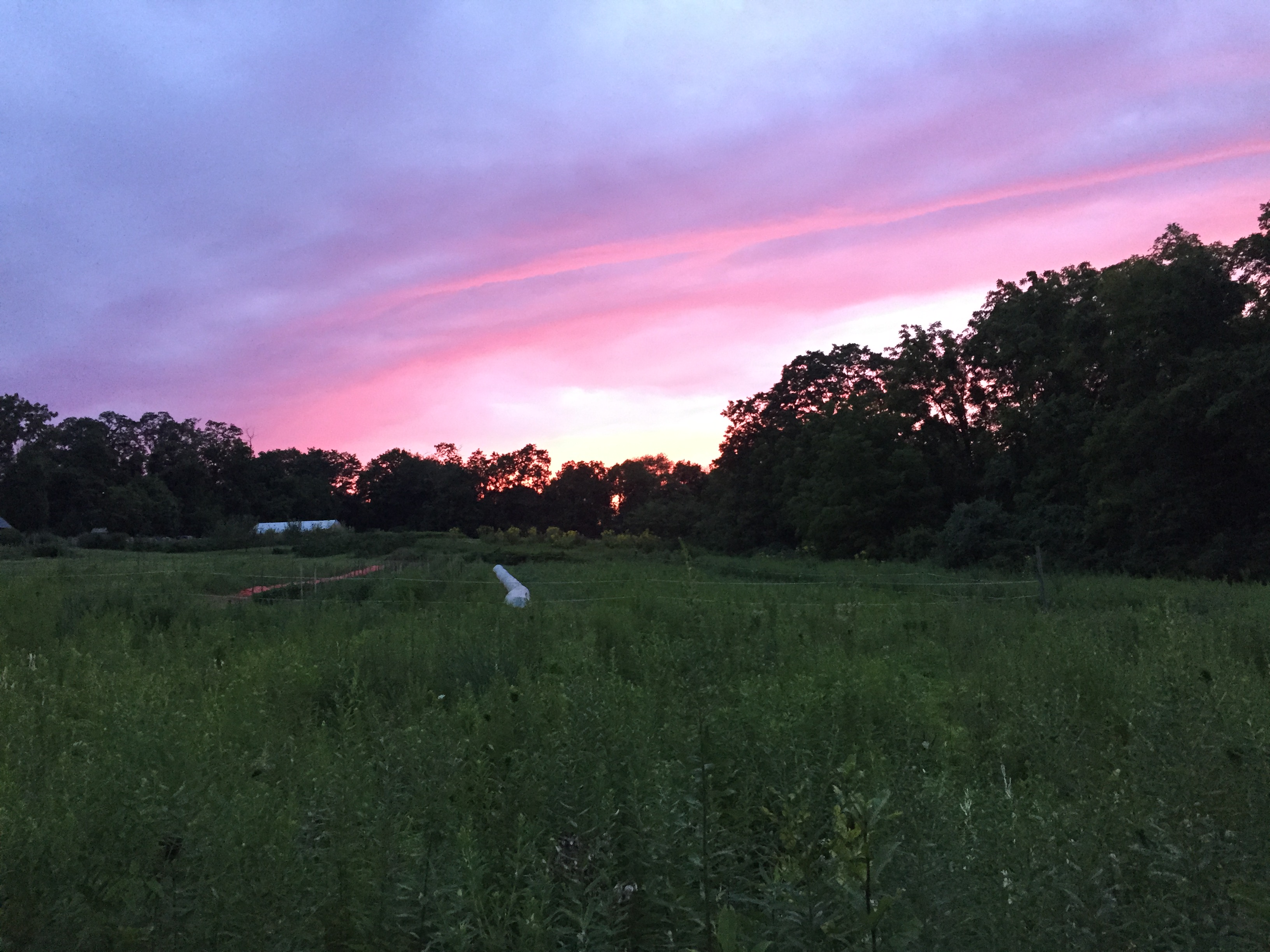
I’m thankful that it is still possible to witness one of nature’s ancient ceremonies in the midst of a highly populated area just 20 miles west of Philadelphia. Conserved land provides the stage for these fascinating creatures. But it’s not just open dance fields that these birds need. They need young woodlands for nesting and wet shrublands that are often cleared around agricultural areas. Since 1966 American Woodcocks have been declining, especially in the Mid-Atlantic, mainly because of habitat loss due to development. These birds are also vulnerable to aerial spraying for forest pests because their forest floor foraging habits make them prone to pesticide accumulation. At Rushton Farm we welcome these night partridges with plentiful habitat surrounding the farm fields and fat, juicy, pesticide-free worms! And we can guarantee them that it will always be that way.
Go to Cornell’s All About Birds website to learn more, watch a video and hear the display sounds: www.allaboutbirds.org
Here’s a video of the “peent” call that is sure to crack you up!
Another of Spring’s clandestine evening ceremonies is the march of the mole salamanders to special seasonal wetlands called vernal pools. A vernal pool can be anything from a ditch in a field to a forested pond. One thing they all share in common is that they are temporary, filling with water during spring rains and drying up again later in the summer. With no inlet or outlet, these pools create essential habitat in which frogs and salamanders can develop in the absence of fish and other predators. However, with the transiency of these pools, the dependent amphibians must be highly adaptable. They must wake quickly from their winter subterranean slumber during the first warm, rainy nights and make the voyage to vernal pools where they must mate and lay eggs fast enough to give the young time to develop before the pools disappear.


Not all amphibians are obligated to vernal pools. For example, spring peepers are tiny tree frogs that sound like birds calling from all kinds of wetlands in our area during spring. However, they do often take advantage of vernal pools for the shelter and resources they offer during the breeding season. Then they return to their life in the trees. Wood frogs, on the other hand, are vernal pool indicator species and among the first to lay eggs, sometimes even before the last snowfall. You can hear their quack-like mating calls from vernal pools very early in the spring.
Like wood frogs, mole salamanders also depend on vernal pools but are much more difficult to find. These slimy dinosaurs don’t make a sound and spend most of their lives underground hunting worms, slugs, snails, spiders, crickets and little insect larvae that no one else can find. Spotted salamanders are the most common and are a spectacle to see, reaching up to 9 inches in length! The males emerge first and travel from upland woods to wooded vernal pools. You can catch this spellbinding migration on warm, rainy nights early in spring by carefully cruising back roads with suitable habitat or exploring wet woods on foot. If you miss the male migration, try another warm rainy night after that and you might catch the females migrating to the males’ territories.

Unfortunately, in the face of development in our area there aren’t many healthy populations of spotted salamanders left except around state parks and preserved lands. A road is a deadly barrier to a salamander, and most of these vernal pool species attempt to return to the pool where they were born —even if a road has suddenly appeared along the route. There are a few places where passionate volunteers help the salamanders and frogs cross busy roads during their annual migration events.

Vernal pools themselves are very sensitive. They are threatened by habitat loss (PA has lost over half of its wetlands), climate change, pesticides and herbicide runoff. Some residential areas now spray for mosquitoes, which decreases food for vernal pool predators. Mowing and removing vegetation around ponds is another threat because it changes the water temperature, increases evaporation and eliminates egg laying sites. As if that weren’t enough, pathogens are also a serious threat to amphibian populations today.
To learn more about vernal pools visit this wonderful site: http://www.naturalheritage.state.pa.us
To report a sighting to help scientists document the status and distribution of amphibians and reptiles across our state or to learn more about these fascinating, under-appreciated animals visit: http://paherpsurvey.org/

Finally, since I can’t take you by the hand right now and show you the wonders of a vernal pool or the woods at night in the rain, I’ll leave you with a poetic account of my most recent experience with a spotted salamander (and a screech owl) last March. Then click on the sound clip to listen to a vernal pool chorus. (The owl in my poem most likely would have eaten that salamander if I weren’t there! Amphibians are an important part of the food web.)
Spotted Salamander Revelry
By Blake Goll
I’m starry-eyed about this guy of my wildest dreams,
An old friend, who met me tonight in the spring mud
and warm rain,
In an instant fulfilling my hopes with his cold-blooded majesty
and turning my wistful solitude into heart pounding ecstasy,
On the glistening, leaf-carpeted forest path
near a magical vernal pool beneath the crescent moon
and the watchful silence of an owl’s secret stare.
I made an appointment with Nature tonight
and in return she bewitched my heart again
and fed my mind, body and salamander-loving soul.
[wpvideo 8Kfv8XiE]

